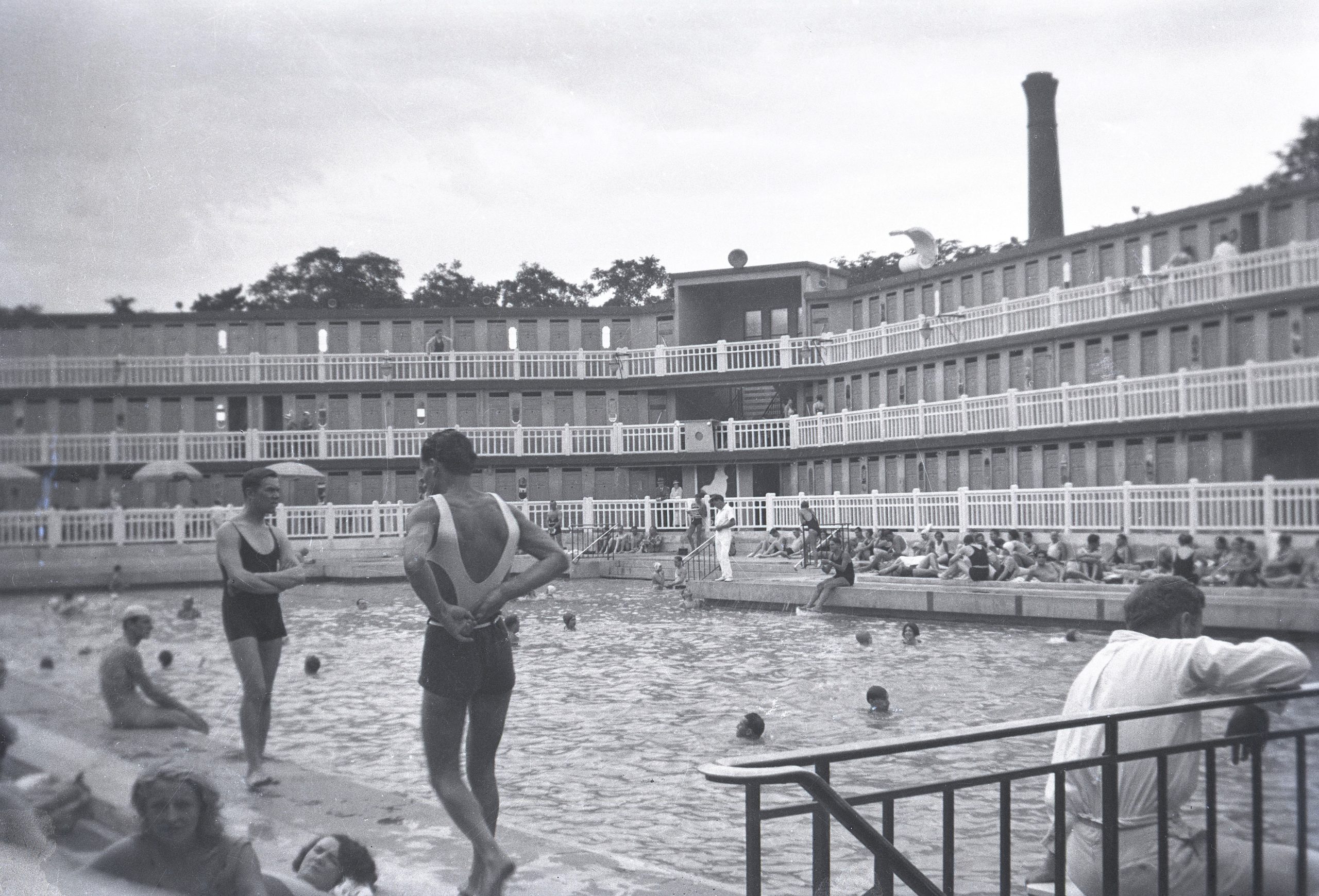Confrontations / POOL_MODERNITY
The individual texts of the series consist of a juxtaposition of words - City, Myth, Modernity, Pool. The mutual confrontation of pairs of words is not about confirming unambiguous relations, a harmonious whole, but about searching for possible disagreements. The confrontation narrows the wide range of their individual meanings.

Piscine Molitor is a swimming pool and hotel complex located in Paris, built in 1929, source: wikipedia.org/wiki/Piscine_Molitor
A public swimming pool is a specific type of public civic building that developed between the 1930s and the 1960s. The idea of building public facilities for recreation and sport in towns and cities originated from the reformist ideals of the 19th century. This kind of public infrastructure became a fairly prominent indicator of modernism, also included in modern urbanism charts such as CIAM.[1]
Typologically, the public bathhouse reflects the attitudes of modernism in several aspects. In line with socialist ideologies (national socialism, communism,…), it speaks of a tendency to provide classless and accessible recreation for all segments of the population. The nature and emphasis of recreation stemmed from its relationship with work, largely defined by fixed working hours and the type of tasks performed.
According to the Athens Charter, leisure time was literally divided into three categories: daily, weekly and yearly. Daily leisure hours should be logistically accessible in the zone of housing. Weekly hours of leisure and excursions were to be located out of the city and in the vicinity of the city. Annual, i.e., vacations, meant traveling out of the city or region. In terms of the city’s zoning concept, and therefore in comparison to the past when housing and work were much more immediately linked, the time and problem of mass population movement was multiplied. Therefore, leisure on a daily or weekly basis had to be as accessible as possible. Public bathing facilities were ideally present in every neighbourhood (by the late 1940s, 60 outdoor public bathing facilities had been built in Greater London).[2]
The social aspect was a change in collective and individual politics, a change in the established way of behaviour of genders and social groups in public. The typology of recreation was family-oriented and was intended to promote social looseness, mixing of genders, classes, races. Residential zones had to include areas for recreation and sport for children, adolescents and adults.In essence, they were an effort to “educate society” in the massive institutionalization of leisure. In practice, however, public swimming pools, for example in the USA, were a testimony to class and racial segregation. In the principle of their location, or ownership and operation.
The Charter speaks of the requirement of exposing the population to natural elements such as rivers, forests, mountains, lakes, sea, … The natural environment, natural hygiene, sport, were another aspect of modern thought, demonstrated in the construction of public bathing places. In the European, North American context, the development of modernism was associated with the promotion of naturalism, healthy body image, beauty. The health benefits of swimming and baths were widely known and accepted in Europe from the late 18th century onwards; the precedents for public bathing, apart from the sea, were already the outdoor baths, the lidos.
Apart from the social, architectural aspect, the public baths were government projects. Thus, they simultaneously express national, commemorative, political aspirations. They became a representational typology. The prestige of every major city was to have an Olympic 50-metre pool. Public swimming pools were modern utilitarian monuments[3].
The swimming pool as a form went through different periods as part of different complexes, according to the current social class that was in power. Bathing, in the form of spas, belonged exclusively to the bourgeoisie. The poor bathed in rivers, lakes. With the advent of socialist ideologies, the institutionalization of bathing, formalized in the form of public bathing, was extended officially to the broad masses. After a boom period, followed by a decrease in the number of users, new types of recreational facilities were established. Many pools quickly wore out and required costly repairs.
The myth of the public swimming pool in the modernist era is the desire to build a good, healthy, clean society. Just as the seasonal public pool was at one time a symbol of the city’s progress, later its status as a value-added amenity shifted to that of a liability, a burden. The pool becomes a continuous monument, passing through various revivals, taking on additional meanings.